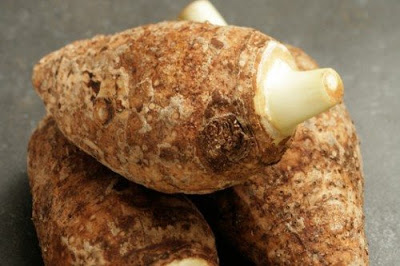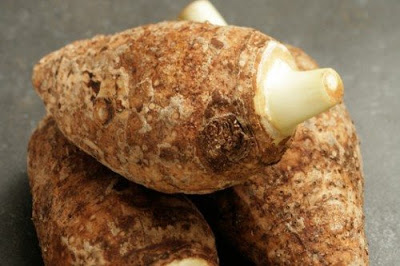The recruitment of a consultant, in order to give them the guidelines so that they can promote and highlight the Sotiras colocasia, is being studied by the Cooperative Company for the Distribution of Agricultural Products (SEDIGEP) Sotiras Ltd.
Nevertheless, the producers are already doing some actions and thoughts and one of them is to sell the savior kolokasi cut and frozen (all year round), while they are also studying the preparation of kolokasi chips.
Our product is already exported to Greece and England and an effort is being made to find new markets. The registration of the Sotiras colocasia, while we also had a registration for the Sotiras poules, certainly creates some other perspectives that the specific product did not have until today. The fact that the Sotiras colocasia did not have the expected development is not related to its cultivation care nor to its needs for water. It seems that what is needed is time, so that the Cypriots learn to eat it more and in different ways than they are used to until today, but also to find new markets abroad.
Speaking to the newspaper POLITIS, the mayor Sotiras George Takkas stated that the perspective is created from the moment the product is registered as a PDO. Now the producers have to go ahead and find ways to promote it. As Mr. Takkas said, it can become a handicraft industry for the exploitation of the product. One of the thoughts, as he stated, is that the Sotiras colocasia should be cleaned, cut and placed in special packages to be sold frozen. The housewife, he added, will be able to have it in her fridge all year round and cook it. Also, the preparation of salmon chips from Sotiras seems to be quite interesting.
"During a visit to China, I tried courgette for dessert and courgette for breakfast. In other words, there are many prospects and it is a product that should be exploited by our producers ", said Mr. Takkas. He noted that easy recipes for cooking should be made known to the general public. Mr. Takkas also focused on the issue of the consultant that the producers need, in order to give them the guidelines.
We eat kolokasi Sotiras
It may be a seasonal product, but Cypriots are used to consuming it. Specifically, we eat 60 thousand tons of zucchini Sotiras a year, said the president of the Cooperative Society for the Distribution of Agricultural Products (SEDIGEP) Sotiras George Musikos and added that there is the prospect of producing more quantities. SEDIGEP, as Mr. Mousikos told us, makes a lot of efforts so that the promotion of the colossal Savior is successful and people learn to eat it in various variations.
Already, he noted, they have located in Egypt the machine that airtight cleans and packs the courgette, so that it can be sold frozen. The same machine cuts the zucchini into chips and those who are interested can have it in their freezer and fry it. Also, from November, when the activities of SEDIGEP will be able to start, they are thinking of placing the courgette in a net, while it will definitely carry the PDO logo. There are, Mr. Mousikos stressed, many prospects for this product, but the funding from the EU must start in order for them to be able to move forward. He noted that the Sotiras courgette is already exported to England and Greece, while new buyers from abroad are constantly approaching them.
One problem seems to be its price, which they find high. He also said that now they have tried new recipes, such as for example the cups with coconut leaf instead of vine leaves, Sotiras coconut croquettes, coconut soup, panna cotta and many more.
From the 12th century Kolokasi Sotiras
Historical reports on the presence of colocasia in Cyprus are not limited to the Sotiras area and probably according to them this product "has been in Cyprus since the 12th century". It is noteworthy that some historical references determine as the most important area of cultivation of the colocasia the occupied villages, Lapithos, Agios Andronikos and the wider peninsula of Karpasia.
According to other reports, the cultivation of colocasia took place almost throughout Cyprus. Oral testimonies, which were obtained through interviews with residents of the Sotira area, show that the kolokasi was transferred from the Karpasia area to the Sotiras area in the early 20th century as a result of "in-law", which led to the transfer of know-how from a Karpasian farmer who settled in the Savior. From the same oral testimonies, the cultivation of colocasia was limited until the late 1950s to plots cultivated near the sea, in the area known as Agia
Thekla, and which are not part of the red soils of the area.
Later, as a result of the inflow of salt water into the springs, all the crops, including the colocasia, were transported inland, closer to the village as almost all the cultivated areas are characterized as red soils. The cultivation of colocasia gradually expanded to the wider Sotira area, but intensified after 1974, as a result of the invasion,
to fill the gap created by the loss of crops in the northern parts of Cyprus.
Source: POLITIS newspaper

